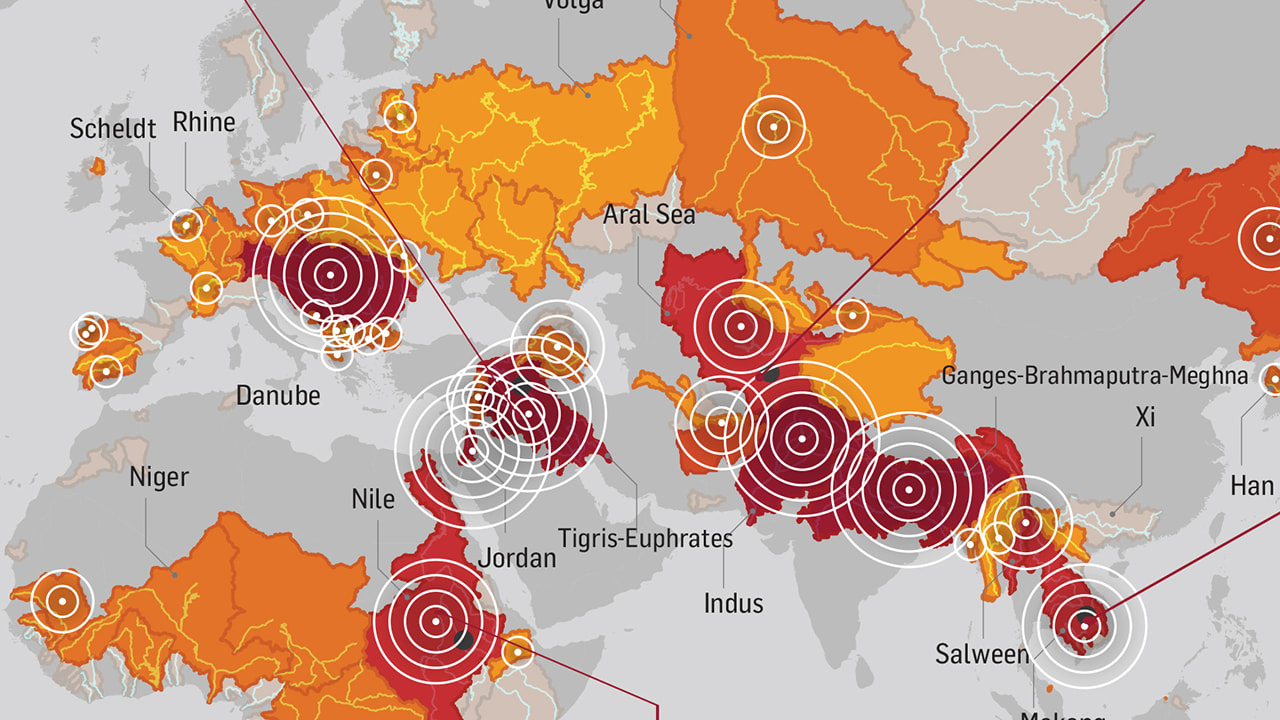The Great Water Wars: Geography of Future Conflicts Over Rivers and Lakes: In the 21st century, the most precious resource on Earth isn’t oil, gold, or land—it’s water. While most people associate water with daily use and agriculture, it’s becoming clear that access to freshwater is rapidly turning into a matter of national security and global stability. As populations grow and climate change alters rainfall patterns, rivers and lakes—the traditional lifelines of civilizations—are becoming potential battlegrounds.
Welcome to the era of Water Wars, where the geography of rivers, lakes, and shared watersheds could shape future conflicts more than borders or politics.
Why Water Is the New Oil
Freshwater makes up just 2.5% of the Earth’s water—and only a tiny fraction of that is easily accessible in rivers and lakes. With demand skyrocketing due to population growth, industrial use, and agriculture, many regions are facing chronic shortages. What happens when countries dependent on shared water bodies start running dry?
The simple answer: tensions rise.
Much like oil-rich regions attracted global attention in the 20th century, water-rich areas—especially those feeding multiple nations—are now becoming geopolitical hotspots. The stakes? Access to drinking water, food security, energy, and even national identity.
Rivers That Cross Borders: A Recipe for Tension
Over 260 river basins in the world cross international borders. That means countries sharing the same river may have very different needs—and vastly different levels of control.
Let’s look at some of the rivers likely to be flashpoints:
1. The Nile River (Africa)
Egypt has long considered the Nile its lifeline. But the river originates in Ethiopia, which recently built the massive Grand Ethiopian Renaissance Dam (GERD). Sudan is also involved, caught in the middle. While all three countries rely on the Nile for agriculture and energy, disagreements over water flow and dam operations have fueled diplomatic tensions for over a decade—and they’re far from resolved.
2. The Indus River System (South Asia)
Shared by India and Pakistan, the Indus and its tributaries are governed by the Indus Waters Treaty signed in 1960. But with water scarcity growing and political relations often strained, both nations have raised concerns about upstream development and water rights. Even though the treaty has largely held, future stressors like glacier melt and increasing demands could test it.
3. The Mekong River (Southeast Asia)
Flowing from China through Myanmar, Laos, Thailand, Cambodia, and Vietnam, the Mekong supports over 60 million people. China has built several dams upstream, impacting flow downstream. As countries battle over irrigation, fisheries, and hydropower, the Mekong is becoming a silent zone of growing friction.
Lakes Under Pressure Too
While rivers tend to grab headlines, lakes aren’t immune to disputes.
-
Lake Chad in Africa has shrunk by over 90% in the last 60 years, putting Nigeria, Chad, Niger, and Cameroon in a tight spot over resource sharing. The drying of this lake has worsened poverty and fed into conflicts with extremist groups exploiting the crisis.
-
The Aral Sea, once one of the largest lakes in the world, has almost disappeared due to water diversion projects in Central Asia. Its collapse has caused regional ecological disasters and deepened tensions between neighboring countries competing for water access.
Climate Change: The Ultimate Wildcard
What makes the water crisis truly unpredictable is climate change. As temperatures rise and rainfall becomes erratic, rivers may flood in some regions and dry up in others. Glaciers feeding major Asian rivers like the Ganges, Brahmaputra, and Yangtze are retreating, threatening future water supplies for billions.
Changing rainfall patterns are also affecting aquifers, groundwater recharge, and seasonal flows—making water-sharing agreements more fragile.
The Role of Geography
Geography isn’t just a backdrop—it’s central to the problem.
Countries upstream on a river (like China on the Mekong or Ethiopia on the Nile) naturally have more control over the flow. Downstream countries often feel vulnerable, especially when their agriculture or hydropower depends on steady water release.
Mountain ranges, monsoon patterns, seasonal snowmelt, and drought-prone plains—these natural features define how water moves, who gets it, and how much. As a result, future geopolitics will revolve around who controls the taps of nature.
Can Water Wars Be Avoided?
Despite the term “Water Wars,” not all water-related tensions will lead to open conflict. In fact, many past disputes have led to cooperation, not war.
International treaties, like the Indus Waters Treaty or the Nile Basin Initiative, show that diplomacy can work. Technologies like water recycling, desalination, and drip irrigation can also ease pressure—if countries are willing to invest and share innovations.
Moreover, organizations like the UN are pushing for “hydro-diplomacy”—peacebuilding efforts centered on water cooperation. After all, water doesn’t follow borders; it flows naturally, ignoring human lines on a map. Our ability to live with that fact might determine the peace of the future.
Final Thoughts: A Future Worth Navigating Together
The Great Water Wars aren’t a dystopian prophecy—they’re a warning. The way we manage shared rivers and lakes today will shape whether tomorrow’s headlines are about wars or treaties, scarcity or solutions.
Water is both a source of life and, potentially, a source of conflict. But it can also be a force for unity, cooperation, and shared survival—if we choose to treat it that way.
As the world changes, one thing is clear: the map of future conflict will follow the rivers. But so might the map of peace.
Tai Chi Health Benefits: Enhancing Both Mind and Body | Maya



